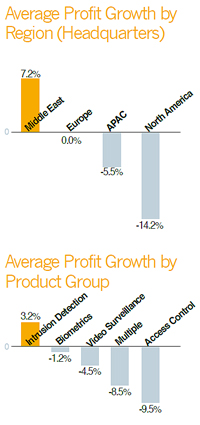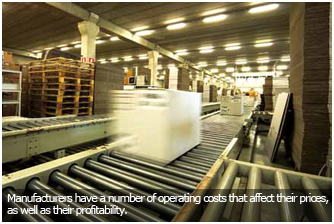Manufacturers have a number of operating costs that affect their prices, as well as their profitability. This year, production costs were affected by a component shortage as well as limited warehousing. Final prices were subject to unfavorable currency changes, an inevitable part of global business.
Production Costs
Manufacturers have a number of operating costs that affect their prices, as well as their profitability. This year, production costs were affected by a component shortage as well as limited warehousing. Final prices were subject to unfavorable currency changes, an inevitable part of global business.
Mobotix managed to lower its material usage ratio, or the cost of materials to the total output, to 26.2 percent from 29 percent, the company said in a prepared statement.
Some costs can be saved by establishing overseas branches. “The real cost is not in external things, but in our growth and expansion,” said Tony Yang, International Marketing Director for Hikvision Digital Technology. “In 2008, we had a joint venture in India, as well as a Russian joint venture and European offices in 2009. Aside from the expansion of our US office, these were necessary investments, as entering new markets offers greater flexibility. With local operations, there are more services and support that can be delivered to the market within the shortest time.”
Other providers found new locations helped their bottom line. “RCG relocated our operational headquarters to RCG Tower in Malaysia in mid-2009, which has proved to be significant in the midst of the global financial crisis by means of lowering operating costs and bringing substantial benefits to the company,” Lee said. “With competitors kicking in, RCG adjusted its pricing model to maintain attractiveness. We, however, believe that we will still have sustainable margin.”
Some makers automated production and relocated manufacturing facilities. While Assa Abloy was not in the top 10 for profit growth, it is worth noting that its Global Technologies division moved production from Western Europe to China. It joins several other makers who produce in China, including Bosch and Panasonic. As Asia manufactures most of the world's security equipment, it seems likely more companies will go east in the future.
 Challenges
Challenges
In light of the numerous external challenges, it was interesting to note how many companies emphasized connecting with customers. Aside from making sales, manufacturers with a long-term strategy repeated that placing client needs first was a continued priority.
The migration to IP remains a hurdle. “IP still accounts for only 30 percent of the market, and this shift is still ongoing,” Mauritsson said. “We will continue to make efforts in education, present more competitive and attractive products, and penetrate smaller installations.”
Other providers saw the IP challenge as an exciting prospect. “Although the security market is moving from older analog systems to IP, 90 percent of this transition has still yet to take place, giving IndigoVision a clear opportunity,” said Oliver Vellacott, CEO of IndigoVision.
Education is a long-term challenge for manufacturers. “Some technologies do not require throwing out existing equipment,” Yang said. “Users should understand the actual costs involved in product replacement. If they are very conservative, we need to address those concerns.”
Implementing new technologies remains a challenge. “A key challenge for us and for the industry in general is the speed at which technology can evolve to cover new needs and solve specific problems,” Fullerton said. “Interesting developments and applications can and will be seen in lower-level analytics, solid-state storage, and incident reporting and management, as video enablement of various business processes will be increasingly appreciated and become prominent.”
Acceptance also is a challenge, as L-1 noted that biometrics have yet to achieve widespread commercial acceptance. The cost, performance and reliability of the competition will also keep biometric vendors on their toes, the company said in a prepared statement.
No silver bullet exists for profit growth. Being the first to commercialize new technologies is an advantage, such as what Axis Communications did with the network camera, but not a surefire way to make money.
Solutions with good value and cost-effective performance will command better returns, so manufacturers will do well to listen to clients, instead of promoting the newest features. It takes a long-term strategy and a commitment to customers to develop a winning solution and retain clients.
Find More 2010 Security 50 Articles :
● Asia Weathers the Storm
 ● Growing Profits in Lean Times PartⅠ
● Growing Profits in Lean Times PartⅠ
● Bucking the Downward Trend: Top 10 Revenue Growers of 2009
● Security 50's Top Performers Rise Above the Fray Part Ⅱ
● Security 50's Top Performers Rise Above the Fray Part Ⅰ